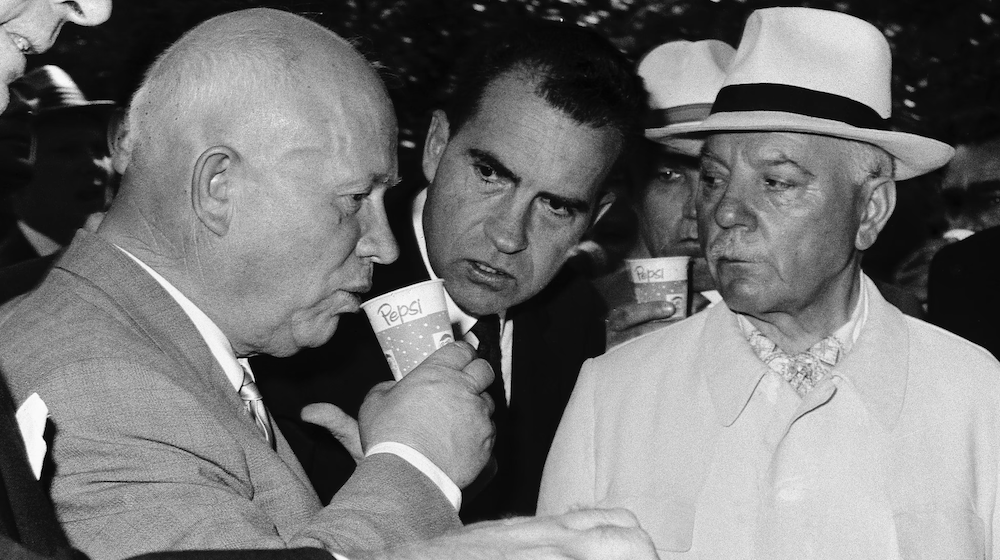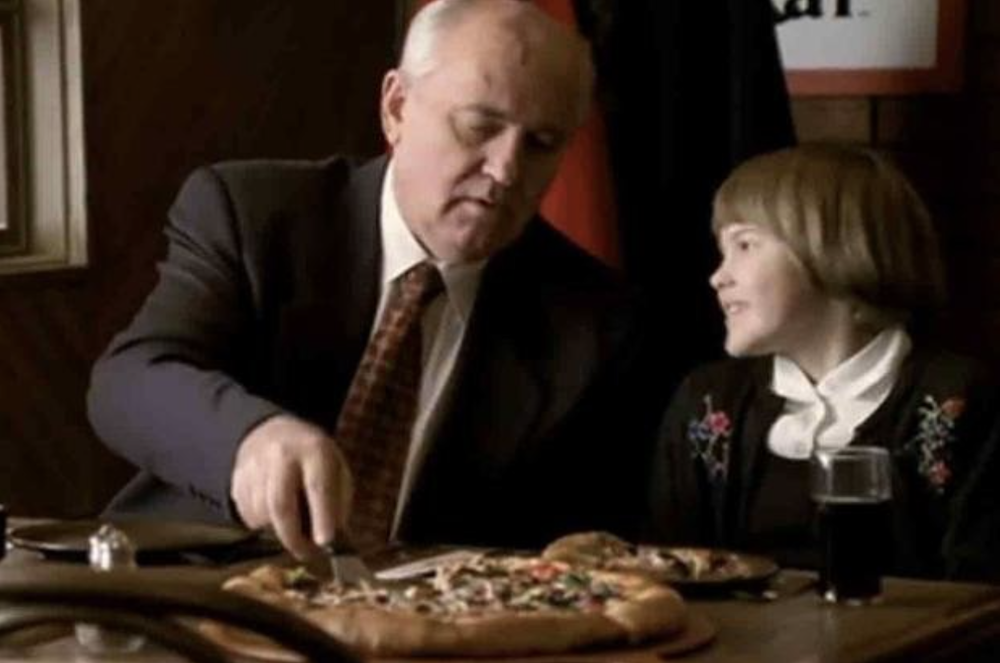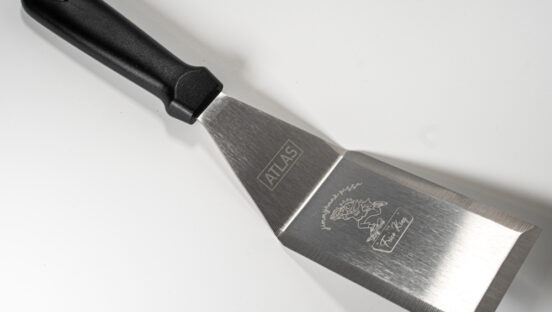In July 2022, Yum Brands, parent company of Pizza Hut, shuttered all of its stores in Russia due to the ongoing war in Ukraine. How Pizza Hut ended up in Russia in the first place is an entirely different story.
Along with McDonald’s and Baskin Robbins, Pizza Hut is credited with becoming one of the first Western restaurant brands to gain a foothold in the Soviet Union. The pizza chain did it under tense circumstances, opening in September 1990, or about 15 months before the Soviet Union finally imploded.
The story was covered in detail by Slate’s podcast “One Year,” which recently spent time focusing on the year 1990. An entire episode, dubbed “Pizzastroika,” was dedicated to Pizza Hut’s entry into Russia. The following is based on that podcast episode.
Related: Did Pizza Hut Steal the Recipe for Stuffed Crust Pizza?
It’s first important to understand Pizza Hut’s commanding, global presence as the 1980s became the 1990s. The largest pizza chain in the world at the time, Pizza Hut claimed nearly 7,000 locations across 54 countries, with combined annual sales of $3.5 billion. When adjusted for inflation, that would equate to $7.27 billion in 2024. To put that into context, 33 years later, Pizza Hut was recording $6.8 billion in worldwide sales across 19,000 locations. In other words, the brand’s restaurants were more profitable back then—and the restaurant held a great deal of prestige.
At the time, PepsiCo owned Pizza Hut. Longtime PepsiCo CEO Donald Kendall was, as Slate’s Josh Levin puts it, “Soviet-obsessed.” Kendall had made his name by introducing Soviet leader Nikita Khrushchev to Pepsi during a 1959 visit to Moscow. When Kendall passed away in 2020, a photo of him pouring cups of Pepsi for Khrushchev as future President Richard Nixon looked on was heavily featured in remembrances of his life.

Getty Images
Kendall may have seen great potential in what must have been viewed as the untapped market of the USSR. The country’s socialist government had kept western institutions out of the country for decades, and for multinational corporations like PepsiCo, that meant the country represented nearly 300 million potential consumers.
But Kendall had a different, more altruistic vision, according to Slate. When Pepsi became the first widely available consumer product in the USSR, Kendall viewed it as the best way Western society could extend an olive branch to the people of the Soviet Union. “For Don Kendall, that wasn’t just a business success story,” Slate said. “[Kendall] believed that corporations were the best hope for international diplomacy.”
Though Kendall officially retired in 1986, he didn’t really stop working on his dream of ending the Cold War by introducing Western brands to the USSR. He saw Pizza Hut as the next-best candidate to insert itself into the Soviet Union, and he was determined to make it happen.
PepsiCo had put an Englishman, Andrew Raffalat, in charge of growing Pizza Hut in Eastern Europe—and it eventually became his job to undertake the complex introduction of the brand into the Soviet Union.
“I don’t think anybody really dreamed that it was possible, to be honest,” Raffalat said. “We all recognized that if this was ever going to happen, that it would be a miracle.”

Getty Images
As the 1980s were drawing to a close, the USSR was under the rule of Mikhail Gorbachev, the general secretary of the Soviet Union’s communist party, who became widely known as the man who oversaw the dissolution of the socialist regime and the end of the Cold War. Gorbachev believed that, in order for the country to have any chance of surviving, it was in dire need of reform.
“He launched his plan to modernize the system by curbing central planners and introducing a touch of capitalism,” Slate said. “He called it ‘perestroika:’ the reconstruction….His push for reform came when the Soviet economy looked close to collapse, with shortages of everything from shoes to onions.”
Perestroika meant the country would start introducing capitalism via partnerships with foreign businesses. This was a strong sign that Pizza Hut would finally carry out Kendall’s long-held vision: They would begin inserting pizza parlors into the Soviet Union, with the first couple of locations in Moscow. In early 1989, Soviet officials gave PepsiCo the blessing they needed. Pizza Hut was coming to Russia.
Still, there were other roadblocks. For example, constructing the pizza parlors and sourcing ingredients to make pizzas were massively challenging undertakings. Construction required bribing Soviet cement workers with crates of vodka, and building the two restaurants ended up costing $3 million (though not all of that money went toward vodka, we should hope).
With a tepid and unreliable Soviet supply chain, Raffalat and his team ended up sourcing ingredients from other countries. Since the Soviet ruble was worth very little, yet businesses in the Soviet Union were forbidden from using Western currency, PepsiCo had to find a workaround. Eventually, PepsiCo and the Soviet Union announced they would swap Pepsi for Russian vodka and Soviet-built ships. The vodka and ships could then be sold for American dollars.
According to Slate, “if you counted up all of the submarines and ships that PepsiCo bought and sold around this time, they technically managed the world’s seventh largest navy.”
In the meantime, Pizza Hut got beaten to the punch to become the first Western restaurant in the Soviet Union when McDonald’s opened in Pushkin Square, reportedly attracting about 30,000 customers on opening day. While this may have kept Pizza Hut from being the answer to a trivia question, it hardly hampered the company’s momentum. Remember: Being first was hardly PepsiCo’s goal for moving into the Soviet Union.

Getty Images
“The truth was,” Slate said, “these two American chains were doing two very different things. McDonald’s was selling Big Macs and fries. Pizza Hut wanted to sell a whole American lifestyle because, for most people in the USSR, dining out wasn’t a thing.”
A casual, sit-down restaurant was unheard of in Russia. And what better place to offer up that experience for the first time than the most American pizza parlor of all?
Besides, Pizza Hut was already winning over the Soviets before it even opened. Because Pizza Hut paid nearly three times what Soviets could make at an average job, applications poured into the restaurant, “many from people with advanced degrees.” Ultimately, the restaurant brand ended up hiring 300 arguably overqualified people to work between its two shops.
“All told, every one of the cashiers had a banking degree,” Slate reported, “and some of the kitchen workers had engineering PhDs—but almost no one had experience with Western restaurant service.”
Pizza Hut finally opened its doors on September 11, 1990—a full 11 years before that date would come to mean something very different to Americans.
It’s hard to overstate how successful Pizza Hut was in its early days. News reports said the occasion resembled a “national holiday,” with a huge line wrapped around the block. The restaurant’s opening was so well attended—and those who attended were so eager to get a slice of pizza—that staff ended up having to lock the restaurant’s doors in between letting people in and out of the building.
Inside, guests found an intoxicating dose of Americana: vintage Pizza Hut carpeting, comfortable red sofas and chairs, brass trim and fake tropical plants. “One customer said it looked like a museum,” Slate reported. The menu was almost entirely the same as Pizza Hut’s American menu, with one notable exception: a seafood specialty pizza with salmon, sardines and onions—a nod to some local favorites.
One of the most indelible impressions Pizza Hut made on the Soviet people, however, was owed to its prodigious salad bar. Consider the fact that, at the time, Soviets had long grown accustomed to bare shelves in grocery stores, with nary a fresh fruit or vegetable to be found. And here was a salad bar, overflowing with fresh produce.
Related: Why Did Pizza Hut Franchisees Just Lay Off Over 1,200 Delivery Drivers?
“It seemed too good to be true for the customers,” Slate said. “When the waitress provided them with the bowl and invited them to the salad bar,” it required a clarification that “yes, yes, you can get whatever you want.”
While Pizza Hut’s first few days were a rousing success, ties to the old Soviet Union remained. Within the first week of operations, Pizza Hut was shut down by Soviet officials under the pretense that the restaurant did not pass a routine health inspection. Except the health inspectors hadn’t even inspected the restaurant—they had come to collect a bribe and left empty-handed.
Ultimately, the manager of the Pizza Hut balked at bribing the officials with rubles, instead working out an arrangement where the Soviets would come to collect several fresh pizzas per week. They were never shut down again.
While Pizza Hut customers in the Soviet Union immediately took to the products being sold, there were cultural differences that created some memorable operational changes. For example, they had to make a rule that customers were not allowed to make a second trip to the salad bar like they could at U.S. Pizza Huts. Patrons found ingenious ways around this, including wrapping breadsticks around the top of a bowl to be able to fit more salad bar goodies per trip.
Americans tasked with training and managing their new employees were also surprised that Russian customers did not understand the concept of waitstaff following up to see if customers were enjoying their meals. They found it odd that a waiter or waitress would come to the table at all except to take an order or drop off food.
“People would just, like, question, ‘Why you ask me about this?’” one of the employees remembered. “It’s not your f—– business.”
While Pizza Hut was wildly popular in Russia, the reforms that allowed it entry into the country were more of a mixed bag. After the Soviet Union fell, years of destabilization left Pizza Hut’s Russian presence in a precarious position. In fact, the brand’s first stores didn’t even last a full decade. They were ultimately shuttered after the City of Moscow, which owned the Pizza Hut buildings, began demanding rent.
Yum Brands, now the parent company of Pizza Hut, made a second attempt to grow the brand in Russia, but those locations ceased operations after Russian President Vladimir Putin ordered an invasion of Ukraine in 2022.
One of the most interesting relics of Pizza Hut’s legacy in Russia is a television ad that never even aired in the Russian market. It shows Gorbachev and his granddaughter in Moscow, walking into a Pizza Hut. A family notices the former Russian leader and begins a debate about whether Gorbachev’s reforms ruined the country, or if they were an honest attempt at modernizing it. They argue until the mother in the family speaks up.
“Because of him, we have many things like Pizza Hut,” she says.
This unites the group: They stand, Pizza Hut slices in hand, and salute Gorbachev, who smiles with pride.
The commercial shows that even if Pizza Hut didn’t last in Russia, its presence in the country was still an unmistakable sign of times that were changing—and that the Soviet Union’s days were numbered.













